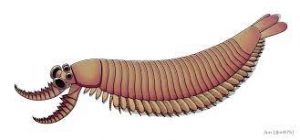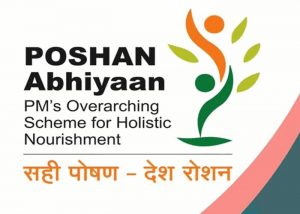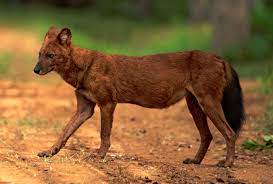Today’s Current Affairs: 5th sep 2023 for UPSC IAS exams, State PSC exams, SSC CGL, State SSC, RRB, Railways, Banking Exam & IBPS, etc
Table of Contents
AG-365S Kisan Drone:

Marut Drones recently secured type certification approvals from the Director General of Civil Aviation (DGCA) for its AG-365S kisan drone for use in agriculture
- Under the Unmanned Aircraft System (UAS) Rules-2021, drones equipped with a Unique Identification Number (UIN) are permitted to operate in Indian airspace.
- By obtaining this certification, Marut Drones is now able to offer its agricultural drone technology to farmers across the country.
- AG 365S is a multi-utility agricultural drone in the small category (less than 25kg).
- It has been designed and developed by Marut Drones; an Indian drone technology company based in Hyderabad.
- The made-in-India kisan drone – AG 365 has been developed particularly for agricultural purposes to reduce crop loss, lower agrochemical usage, and better yield and profits to the farmers.
- It is the first multi-utility agriculture small-category drone to receive the DGCA-approved type certificate in India.
- The AG-365S drone has the highest endurance of 22 minutes.
- It is equipped with advanced obstacle and terrain sensors, which enables safe and smooth operations even in rough and patchy terrains.
- It is equipped with multiple payloads, and one AG-365S can be used for spraying pesticides, granular spreaders and also for running RPTO drone training academies.
Kylinxia zhangi : Old Fossil Discovered

Researchers have recently investigated a nearly 520 million-year-old fossil of Kylinxia zhangi with a CT scanner and redescribed the animal.
- Kylinxia zhangi is an extinct arthropod that lived in the early Cambrian period, about 520 million years ago.
- The fossil of the species was uncovered near the town of Chengjiang in the Yunan Province of southern China.
- Kylinxia is among the 250 or so extremely well-preserved fossil animals described from the region, which are together known as Cambrian Chengjiang biota.
- It had a segmented body with a head, thorax, and abdomen.
- Kylinxia sported three eyes on its head, along with a pair of fearsome claws that was possibly used to catch prey.
- It had a fused head shield, a segmented trunk, and jointed legs.
- The creature had a head with six segments, which is similar to modern insects.
M S Swaminathan Award 2023:

Dr P V Satyanarayana, Principal Scientist at the Agricultural Research Station, Acharya N.G. Ranga Agricultural University, Ragolu, has been recently awarded the prestigious Dr MS Swaminathan Award.
- M S Swaminathan Award was instituted in 2004 with the objective to recognise the lifetime contributions of eminent persons who have made great impacts and outstanding contributions to agricultural research and development and to the overall food security and sustainability of agriculture, with special reference to India.
- It is named after the doyen of Indian Agriculture, Prof. M.S. Swaminathan, Chairman, M.S Swaminathan Research Foundation, Chennai.
- It is a biennial award constituted by the Retired Indian Council of Agricultural Research Employees Association (RICAREA) and Nuziveedu Seeds Limited (NSL).
- The award carries a Cash prize of Rs.2 lakhs (Rupees Two Lakhs only), a Medal, and a Citation.
Vibrio vulnificus : Flesh-Eating Bacteria

The US Centers for Disease Control and Prevention issued a national health alert to warn doctors and clinicians to be on the lookout for people infected with the flesh-eating bacteria Vibrio vulnificus.
- Vibrio vulnificus is a type of bacteria that can cause a fatal infection.
- This infection can happen when a wound comes into contact with raw or undercooked seafood, its juices, or its drippings or salt water.
- It eats away at the skin, muscles, nerves, fat and blood vessels around an infected wound.
- In severe cases, it can lead to septicemia, which is when the bacteria enter the bloodstream.
- It results in a septic shock, where blood pressure drops dangerously.
- Symptoms:
- Watery diarrhoea is often accompanied by stomach cramping, nausea, vomiting, and fever.
- For bloodstream infection: fever, chills, dangerously low blood pressure, and blistering skin lesions
- For wound infection: Fever, redness, pain, swelling, warmth, discolouration, and discharge (leaking fluids).
- The only method available to avoid getting infected with the bacteria is to avoid coming in contact with it.
- It is advised to make sure any seafood you consume is well-cooked, avoid raw or undercooked oysters and clean your hands after handling any kind of seafood.
Koraput Kalajeera Rice : GI Tag

Koraput Kalajeera Rice,’ an aromatic rice, has got Geographical Indications status.
- The farmers of Koraput district in Odisha have domesticated Kalajeera rice over generations.
- It is known as the ‘Prince of Rice’ and is an aromatic variety of rice.
- The ancestors of the present tribal communities of Koraput district have domesticated the rice in the region for thousands of years, contributing to the conservation of the crop.
- It is popular among rice consumers for its black colour, good aroma, taste and texture.
- The ancient text explains that Kalajeera rice improves memory and controls diabetes.
- It is believed to increase haemoglobin levels and the body’s metabolism.
- This fragrant grain has antispasmodic, stomachic, carminative, antibacterial, astringent and sedative properties.
- The rice is grown in Koraput district’s Tolla, Patraput, Pujariput, Baliguda and Mohuli areas.
6th Rashtriya Poshan Maah : Theme

The Ministry of Women and Child Development (MoWCD) is celebrating the 6th Rashtriya Poshan Maah throughout September 2023.
Highlights About Poshan Maah 2023:
- The focus is on comprehensively addressing malnutrition using a life-cycle approach, which is a key component of Mission Poshan 2.0.
- The main objective is to raise awareness about critical life stages, including pregnancy, infancy, childhood, and adolescence, in order to promote better nutrition across India.
- Theme: ‘Suposhit Bharat, Sakshar Bharat, Sashakt Bharat’ (Nutrition-rich India, Educated India, Empowered India), emphasising the importance of nutrition, education, and empowerment in building a healthier and stronger country.
- During this month-long event, the MoWCD will lead nationwide efforts to raise awareness about nutrition, focusing on key themes such as Exclusive Breastfeeding and Complementary Feeding.
- These efforts include activities like:
- Swasth Balak Spardha (Healthy Child Competition) to encourage healthy competition for better nutrition and overall well-being.
- Poshan Bhi Padhai Bhi (Nutrition and Education), improving nutrition through Mission LiFE (Lifestyle for Environment), sensitising tribal communities about nutrition, and addressing anaemia through a Test, Treat, Talk approach.
Poshan Abhiyaan:
- It is a flagship initiative by the Government of India (GoI) for addressing malnutrition comprehensively.
- This integration aims to create an integrated nutrition support program that enhances the content, delivery, outreach, and overall outcomes of nutritional services.
- The primary focus is on promoting practices that improve health, wellness, and immunity against diseases and malnutrition.
Reinforced Aerated Autoclaved Concrete:

More than 100 schools across England were recently ordered to close buildings because they were constructed using unsafe concrete known as Reinforced Aerated Autoclaved Concrete (RAAC).
- Reinforced Aerated Autoclaved Concrete (RAAC) is a lightweight, bubbly form of concrete that was used in roofs, floors, and walls between the 1950s and 1990s.
- It looks like standard concrete, but compared with the “traditional” reinforced material, which is typically denser, Raac is weak and less durable.
- The material was favoured in construction projects because of its lightweight thermal properties.
- It is made from a combination of cement, lime, water, and an aeration agent.
- The mixture is poured into moulds and then subjected to high pressure and heat, known as autoclaving, to create a lightweight, strong, and porous material.
- It is cheaper also quicker to produce and easier to install.
- RAAC has excellent thermal insulation properties due to the air bubbles within the material.
- It helps maintain a comfortable indoor temperature while reducing heating and cooling energy consumption.
Preeclampsia : Recent Study

A recent study revealed that a liquid-biopsy approach that measures DNA-methylation levels in the blood may improve the detection of pregnancies at risk of developing preeclampsia at early stages.
- Preeclampsia is a serious blood pressure condition that develops during pregnancy.
- It typically develops after the 20th week of pregnancy.
- It can also affect other organs in the body and be dangerous for both the mother and her developing fetus
- People with preeclampsia often have high blood pressure (hypertension) and high levels of protein in their urine (proteinuria).
- Changes in vision, including temporary loss of vision, blurred vision or light sensitivity
- The best clinical evidence for the prevention of preeclampsia is the use of low-dose aspirin.
- A liquid biopsy is a simple and non-invasive alternative to surgical biopsies, which enables doctors to discover a range of information about a tumour through a simple blood sample.
Patulin : Fungus Study

A research team from the Tokyo University of Science (TUS) in Japan discovered a fungus that helps destroy a harmful food toxin, Patulin.
Key finding:
- The team identified a filamentous fungal strain, Acremonium sp. or “TUS-MM1,” belonging to the genera Acremonium.
- The scientists then performed various experiments to shed light on the mechanisms by which TUS-MM1 degraded patulin.
- This involved incubating the mold strain in a patulin-rich solution and focusing on the substances that gradually appeared both inside and outside its cells in response to patulin over time.
- They found that TUS-MM1 cells transformed any absorbed patulin into desoxypatulinic acid, a compound much less toxic than patulin, by adding hydrogen atoms to it.
- The team also found that some of the compounds secreted by TUS-MM1 cells can transform patulin into other molecules.
- Patulin (C7H6O4) is a toxic mycotoxin produced by several types of fungi.
- It is harmful to a wide range of creatures, including humans, mammals, plants, and microbes.
- It can grow on damaged or decaying fruits, especially apples.
- It is responsible for a wide variety of health hazards, including nausea, lung congestion, ulcers, intestinal haemorrhages, and even more serious outcomes—such as DNA damage, immunosuppression and increased cancer risk.
Pulikkali(Tiger Dance) : Onam Celebration

Human tigers and leopards pranced about the streets in a rollicking show of Pulikkali to lend a carnivalesque finish to Onam celebrations.
- Pulikkali (Tiger Dance) is one of the folk art forms of Kerala.
- On the fourth day of the Onam festival, artists paint their bodies like tigers with stripes of yellow, red and black and dance to the rhythm of traditional percussion instruments such as thakil, udukku and chenda.
- The Swaraj Ground in Thrissur district plays host to this carnival that has people appearing in various unique hues and masks.
- The main theme of this folk art is tiger hunting, with participants playing the role of tiger and hunter.
- It was introduced by the erstwhile ruler of Cochin, Maharaja Rama Varma Sakthan Thampuran.
Onam:
- It is the biggest and the most important festival in the state of Kerala.
- It is a harvest festival celebrated at the beginning of the month of Chingam, the first month of the Malayalam Calendar (Kollavarsham).
- The Carnival of Onam lasts from four to ten days. The first day, Atham and the tenth day, Thiruonam, are the most important of all.
- According to a popular legend, the festival is celebrated to welcome King Mahabali, whose spirit is said to visit Kerala at the time of Onam.
- Another key feature is Vallamkali, the Snake Boat Race, held on the river Pampa.
- Kaikotti kali and Thumbi Thullal are two graceful dances performed by women on Onam.
Dhole : Asiatic Wild Dog

Villagers in Shivamogga district, Karnataka, were recently treated to a rare sighting of an Asiatic Wild Dog group, also known as Dholes.
- Asiatic Wild Dog (Dhole) is a wild canid found in the forests of central, south, and southeast Asia.
- Scientific Name: Cuon alpinus
- They are found throughout Eastern and Southeastern Asia.
- They can be seen as far north as Siberia, as far south as some Malaysian islands, and as far west as the Indian peninsula.
- They are found in three clusters across India, namely the Western and Eastern Ghats, the central Indian landscape and North East India.
- The Western and Eastern Ghats is a stronghold region for dholes.
- Dholes are animals that inhabit dense jungles, steppes, mountains, scrub forests, and pine forests.
- They vary in colour from charcoal grey to rust red to sandy beige, depending on their habitat.
- Dholes are highly social animals, and they frequently hunt in packs of 5 to 12. These clans may grow to as many as 30 or 40 members.
- Conservation status:
- IUCN Red List: Endangered
- The Wildlife Protection Act 1972: Schedule II
- CITES: Appendix II
Myocardial Infarction : New Study

Red blood cells exposed to oxygen deficiency protect against myocardial infarction (heart attack), according to a new study.
- Red Blood Cells (RBCs) are one of the components of blood. (The others are plasma, platelets and white blood cells.)
- They deliver oxygen to the tissues throughout the human body.
- Oxygen turns into energy, and tissues release carbon dioxide.
- RBCs also transport carbon dioxide back to the lungs to be exhaled.
- RBCs made are made in the bone marrow.
- They typically live for about 120 days, and then they die.
- RBCs contain a protein called haemoglobin, which binds to oxygen in the lungs, forming oxyhemoglobin.
- Haemoglobin also helps carry carbon dioxide back to the lungs as carbaminohemoglobin.
- RBCs are biconcave, disc-shaped cells with a dimple in the centre on both sides. This unique shape increases the surface area of the cell, allowing for efficient gas exchange.
- It is covered with a membrane composed of lipids and proteins and lacks a nucleus.




